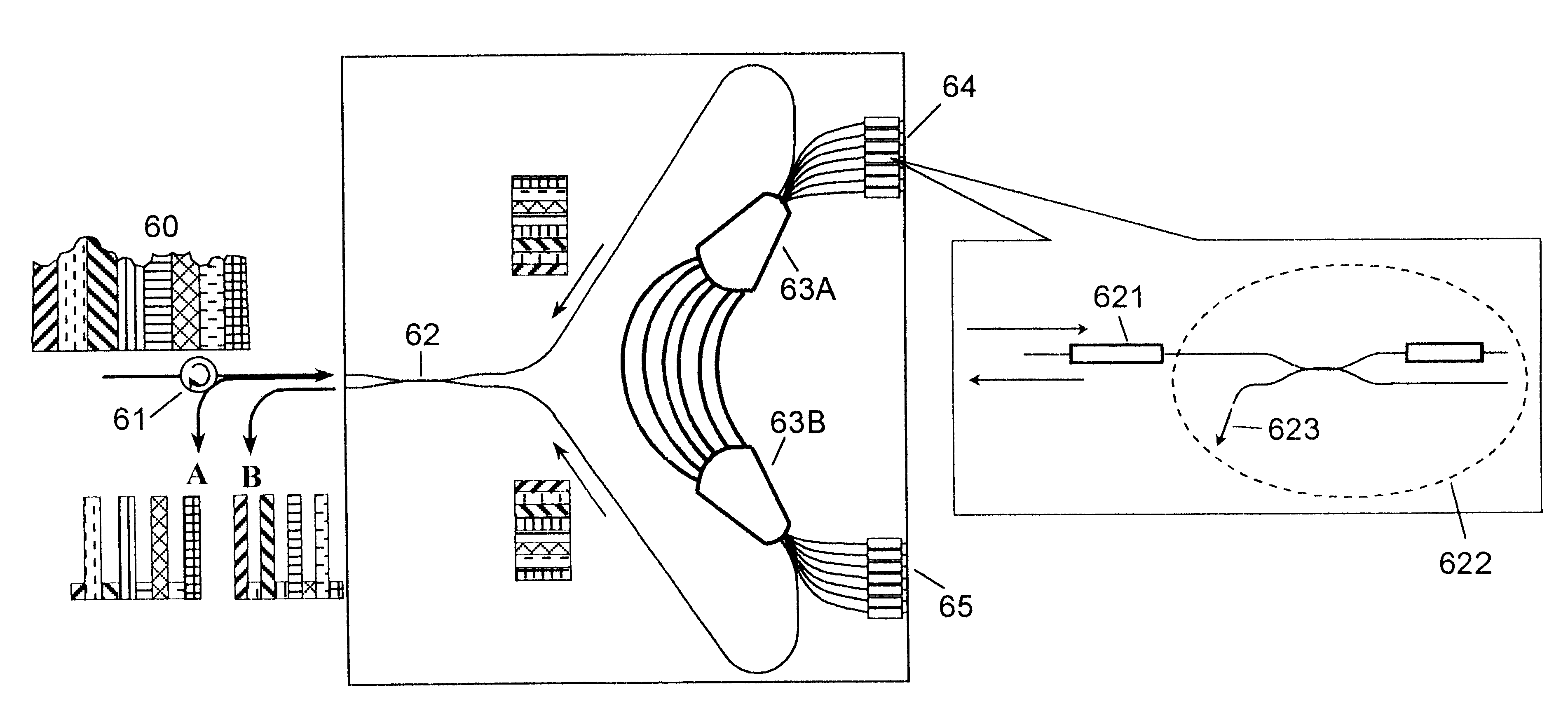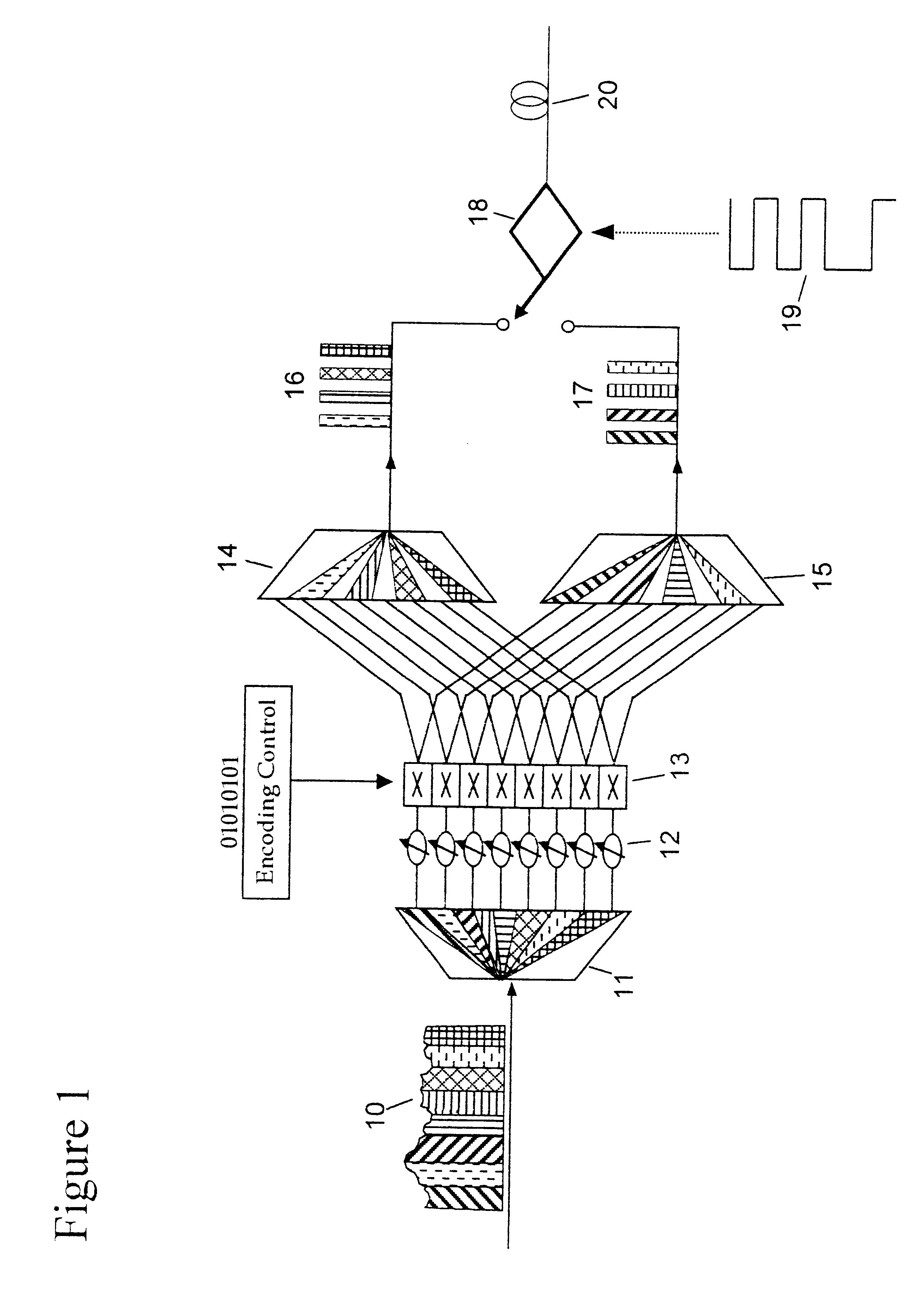Integrated spectral encoder/decoder for optical CDMA communication system
a communication system and optical spectral encoder technology, applied in multiplex communication, optical code multiplex, instruments, etc., can solve the problems of cdma, high cost, cumbersome, etc., and achieve the stability, integration, and compact packaging requirements of the telecommunications industry.
- Summary
- Abstract
- Description
- Claims
- Application Information
AI Technical Summary
Benefits of technology
Problems solved by technology
Method used
Image
Examples
Embodiment Construction
The complete system as shown in FIG. 4 comprises a circulator 61, a 3 dB coupler 62, a single doubled ended AWG 63A / 63B, an array of thermooptic phase-shifters 621 and tunable attenuators 622, and a coated, reflecting surface 64 / 65. The circulator allows the signal to transmit only in one direction. The 3-dB coupler 62 divides the signal into two paths. The double-ended AWG 63A / 63B functions as described in connection with FIG. 2 to decompose the input broadband light source into individual spectral components. Each spectral component then passes through a thermooptic phase shifter. The thermooptic phase-shifters 621 and attenuator 622 can adjust the phase-shift and the attenuation thermal-optically. The reflecting surface 64 / 65 creates virtual counterparts from the real counterparts of the incident image. The whole structure and its image form a large Mach-Zehnder interferometer (MZI) with an AWG, phase shifters, and tunable attenuators in each arm as shown in FIG. 5a. The attenuat...
PUM
 Login to View More
Login to View More Abstract
Description
Claims
Application Information
 Login to View More
Login to View More - R&D
- Intellectual Property
- Life Sciences
- Materials
- Tech Scout
- Unparalleled Data Quality
- Higher Quality Content
- 60% Fewer Hallucinations
Browse by: Latest US Patents, China's latest patents, Technical Efficacy Thesaurus, Application Domain, Technology Topic, Popular Technical Reports.
© 2025 PatSnap. All rights reserved.Legal|Privacy policy|Modern Slavery Act Transparency Statement|Sitemap|About US| Contact US: help@patsnap.com



